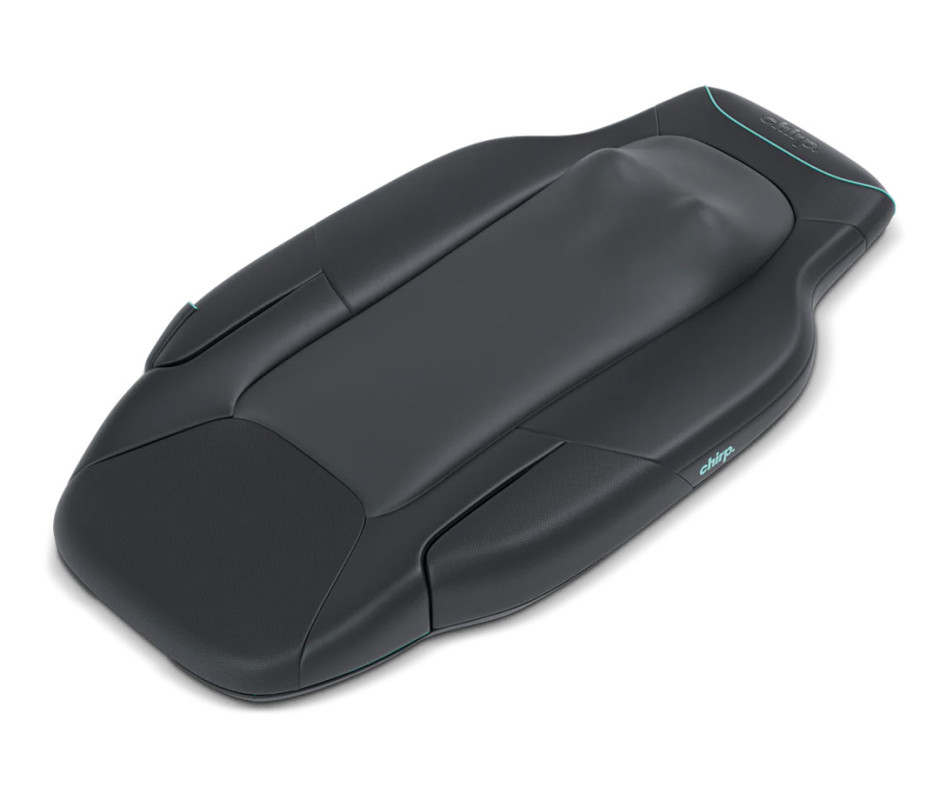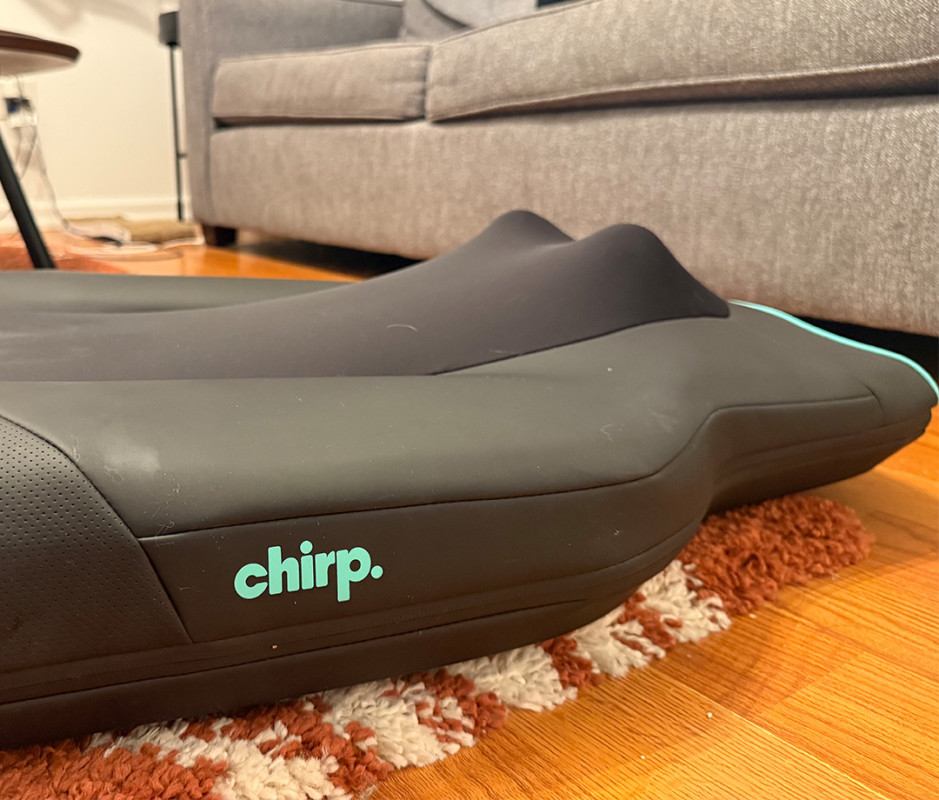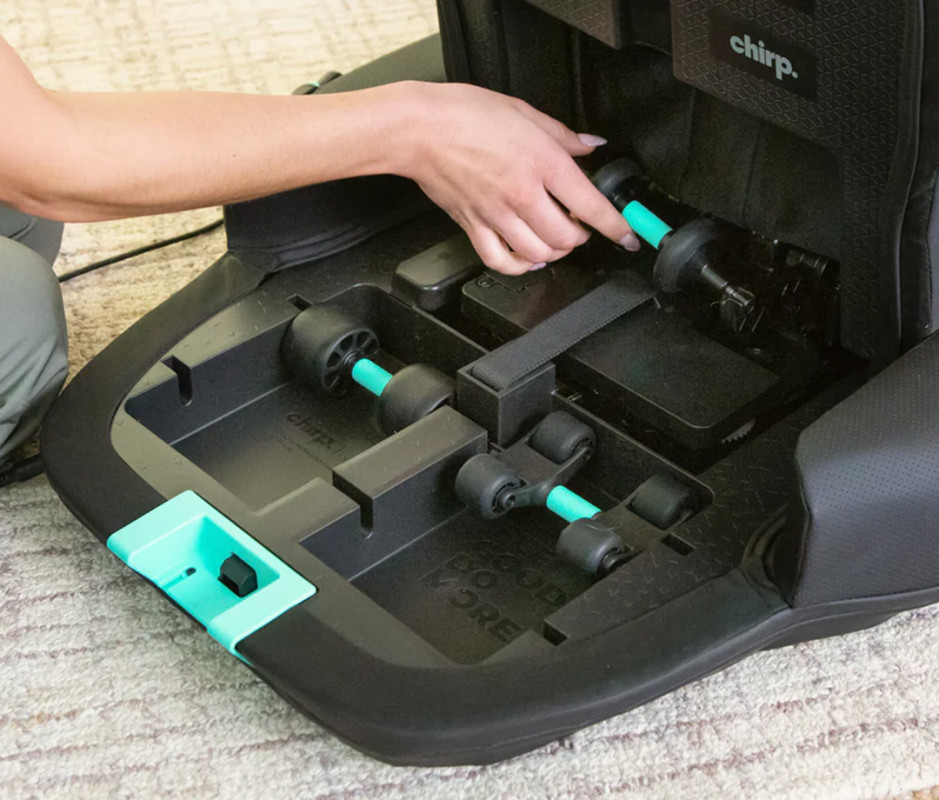Men’s Journal aims to feature only the best products and services. If you buy something via one of our links, we may earn a commission. Prices are accurate and items in stock at time of publishing.
As someone who hunches over a laptop all day, I’m always looking for ways to untangle the knots in my upper back. I’ve tried foam rollers, trigger point balls, and massage guns, and most of them end up collecting dust in a corner of my house because they take more effort than I have to give after a tough workout or long writing day.
The Chirp Contour Massage Mat, though, is one of the few recovery products I actually keep in rotation. I’ve been testing it for over six months and it’s still earned a permanent spot in my living room, despite its somewhat bulky size. Here’s the lowdown.
Related: Want a Wide, Muscular Back? Strength Coaches Swear by This Underrated Pulldown Variation
What It Is

The Chirp Contour Massage Mat is a padded floor mat with built-in massage and decompression features designed to mimic what you’d get on a professional table. You get kneading rollers for your neck and back, heat to loosen tight muscles, and even a decompression mode that gently undulates your spine. Unlike handheld tools like massage guns, the appeal here is that it’s completely passive. You just lie down, press a button, and the mat does the work for you.
It’s designed for people who carry a lot of tension in their upper back, shoulders, or spine—which is probably just about all of us during this modern tech era. But it’s also a valuable recovery product for athletes who want a low-effort way to loosen up after a run, lifting session, or sports training.
Chirp Contour Massage Mat Overall Impressions

I was excited but skeptical when I first tried the Chirp mat. I grew up in the era of clunky massage chairs that felt fine but always left something to be desired, so my expectations were low. And I love massages so much that I didn’t think a piece of equipment could come close. But this actually surprised me. The neck rollers hit where I carry the most tension and apply enough pressure to actually loosen things up, and the decompression mode felt like my spine was moving in ways it never had before. After a few sessions, I found myself using it multiple times a week and my spine felt much looser. Overall, my body felt more mobile with less upper back and neck pain.
Key Features and Tech
The mat has two main zones: one for your neck and one for your back, each designed to target stubborn tension points in different ways.
The neck portion is straightforward but surprisingly effective. The rollers rotate clockwise or counterclockwise, and you can shift the mechanism up or down depending on whether you want it to dig into your upper traps, the base of your skull, or lower along your shoulders. For me, it’s been a lifesaver on days when I’ve been hunched over a laptop and feel tension start to build.

The back panel is where things get more interesting. It has a built-in heating element (optional, but I almost always flip it on), and two very different modes: massage and decompression. The massage mode feels like deep tissue rollers working their way along your spine, while decompression feels like a wave-like lift and release that is supposed to “expand compressed joints,” according to Chirp.
The massage mat automatically adjusts the roller height and pressure according to your height and weight, but you can tailor it further. You can tinker with the settings manually if you know exactly where you’re sore, or you can let the machine run through one of its three pre-programmed cycles: Warm Up, Recovery, or Relax. Those cycles vary the intensity and rhythm of the rollers so you don’t have to think about it.

You can also adjust the pressure level by swapping out the roller attachments. There are three sets tucked into a hidden compartment at the bottom of the mat. I usually keep the medium “contour” rollers in because they deliver enough pressure without it feeling too pinpointed. If I need more intensity, I’ll bring my knees up toward my chest to push more weight into the rollers. But if I really need to work out a kink in a specific spot along my spine, I’ll swap in the deep-tissue rollers.
The overall design feels luxe and durable. The fabric is soft and comfortable, but easy to wipe down. It shows no signs of wear after half a year of regular use.
Pros
- Deep tissue massage without the arm workout of a massage gun
- Heat setting adds soothing warmth and boosts circulation
- Passive setup makes it easy to actually use regularly
Cons
- Can’t customize the pressure of the neck roller
- Takes up a decent bit of space
Final Verdict
No at-home gadget is ever going to rival the hands of a good massage therapist, but the Chirp Contour Massage Mat comes closer than I expected. It’s undeniably pricey—$600 is a serious splurge—but if you’re already spending money on regular massages for stubborn neck or back tension, this could be a worthwhile trade-off. I’ve ended up using mine multiple times a week, and it’s become the recovery tool my friends always ask to try when they visit.
What really makes it stand out is the passive nature. Could you mimic the effects with a foam roller or a few lacrosse balls? Probably. But the truth is, I never reach for those as often as I reach for this. The mat removes the barrier of effort, and for me, that consistency has been worth it. It’s actually relaxing, whereas some recovery feels like a chore.
If the price still makes you pause, Chirp’s 6” knot kneader wheel is another one of my go-to tools. It doesn’t have the heat or decompression features, but it hits the upper back beautifully at a fraction of the cost.
Why You Should Trust Me
I’ve been testing outdoor, fitness, and recovery gear for more than five years, and my work has appeared in places like GQ, Men’s Health, Condé Nast Traveler, and Outside. In that time, I’ve tested the whole range of recovery tools—everything from $10 massage balls to high-end massage guns and pneumatic boots. Some end up in a closet, while others end up in heavy rotation. I tested the Chirp Contour Massage Mat for several months, using it after long runs, lifting days, and long mornings at my laptop, and compared it against the other recovery gear I already own. What you’re reading here is the same kind of feedback I give friends, editors, and training buddies when they ask me what’s actually worth buying.
Related: Best Compression Socks to Soothe, Rejuvenate, and Help Circulate Blood Through Your Legs
